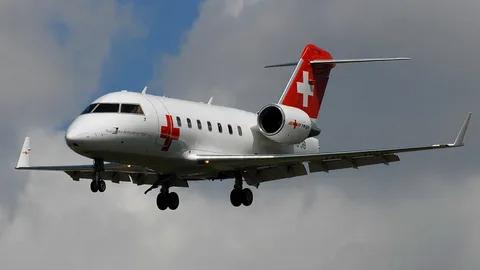Air Ambulance Services A Potential Game-Changer in Healthcare The Role of a Promising Lifesaving Solution

History and Development of Air Ambulance
Types of Air Ambulance Aircraft
There are two main types of aircraft used for medical evacuation - helicopters and airplanes. Helicopters are well-suited for shorter transport times over terrain that is not accessible by ground. Their ability to take off and land virtually anywhere makes them ideal for emergencies in remote or hard to reach areas. However, helicopters have limitations in terms of range, speed, and fuel capacity. For longer interfacility transfers requiring pressurized cabins and extended flight times, fixed-wing airplanes are generally better options. Both helicopters and airplanes used for air ambulance missions are specially equipped with advanced medical equipment to sustain critical patients during flight.
Air Ambulance Services began in the early 1920s when small, fixed-wing aircraft were first used to transport patients over long distances in remote areas. However, it was not until after World War II that helicopters became readily available, allowing for vertical take-offs and landings which revolutionized the air medical transportation system. In the 1950s, the first modern air ambulance programs were established using repurposed military helicopters to transport critically ill or injured patients. Throughout the 1960s and 1970s, these programs grew rapidly as their lifesaving potential became clear. Advances in aviation and medical technology have continued to improve air ambulance. Today, fixed-wing airplanes and helicopters provide time-critical medical transport across the country and around the world.
Medical Crew and Onboard Equipment
All air ambulance aircraft carry a specialized medical team on board to care for patients during transport. At minimum, there is a pilot and a medical technician or nurse to manage patient care. Some programs also include physicians depending on mission requirements and patient acuity. Medical equipment typically includes ventilators, cardiac monitors, defibrillators, IV pumps, and a full range of medications and emergency airway management tools. Ambulances may also have onboard blood, plasma, or a cell saver to rapidly transfuse patients if needed inflight. Environmentally controlled cabins maintain patient temperature, humidity and a pressurized atmosphere for long-distance fixed-wing flights. Onboard technologies enable real-time transmission of patient vital signs and telemetry to receiving medical facilities.
Impact of Air Medical Transport
Numerous studies have demonstrated the lifesaving impact of air ambulance compared to ground transport alone. Faster transport times allow for treatment of time-sensitive conditions that could lead to disability or death if not reached urgently, like severe traumatic injuries, strokes, heart attacks, and major bleeding. Indirect benefits include reduced patient discomfort through pressurized cabin atmosphere, more specialized prehospital care delivered inflight, and direct transport to optimal receiving facilities bypassing closer lower-level ones.
Air medical evacuations in rural and wilderness areas serve an extremely important service for isolated populations with limited ground transportation alternatives. Overall, integrated aeromedical transport has significantly improved patient outcomes for emergencies requiring critical care intervention.
Get more insights on Air Ambulance Services
- Art
- Causes
- Crafts
- Dance
- Drinks
- Film
- Fitness
- Food
- Spiele
- Gardening
- Health
- Startseite
- Literature
- Music
- Networking
- Andere
- Party
- Religion
- Shopping
- Sports
- Theater
- Wellness
- IT, Cloud, Software and Technology


